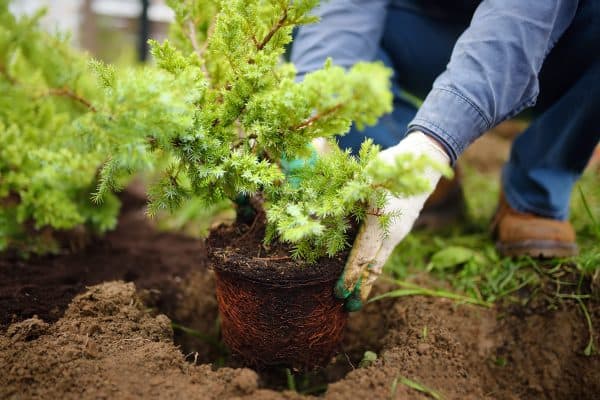Maples are one of the most popular trees included in yards, gardens, and landscapes primarily due to their colorful foliage that changes with the seasons. Japanese and red maples may belong to the same species but have considerable differences in growth requirements and environmental requisites. We did the work to bring you all the information you need to know.
Japanese and red maple trees both fall under the plant genus Acer and exhibit similarities in terms of general appearance, flowering characteristics, and pH requirement. They differ in origin, natural habitat, relative size, and certain care needs. Choosing the right variety would greatly depend on the local environment and conditions in your area.
Maples are an attractive addition to any garden and commonly serve as the focal point of the area. However, different varieties vary in growth and development needs. The article will help you determine which variety best suits your local area, the general climate, and your preference.
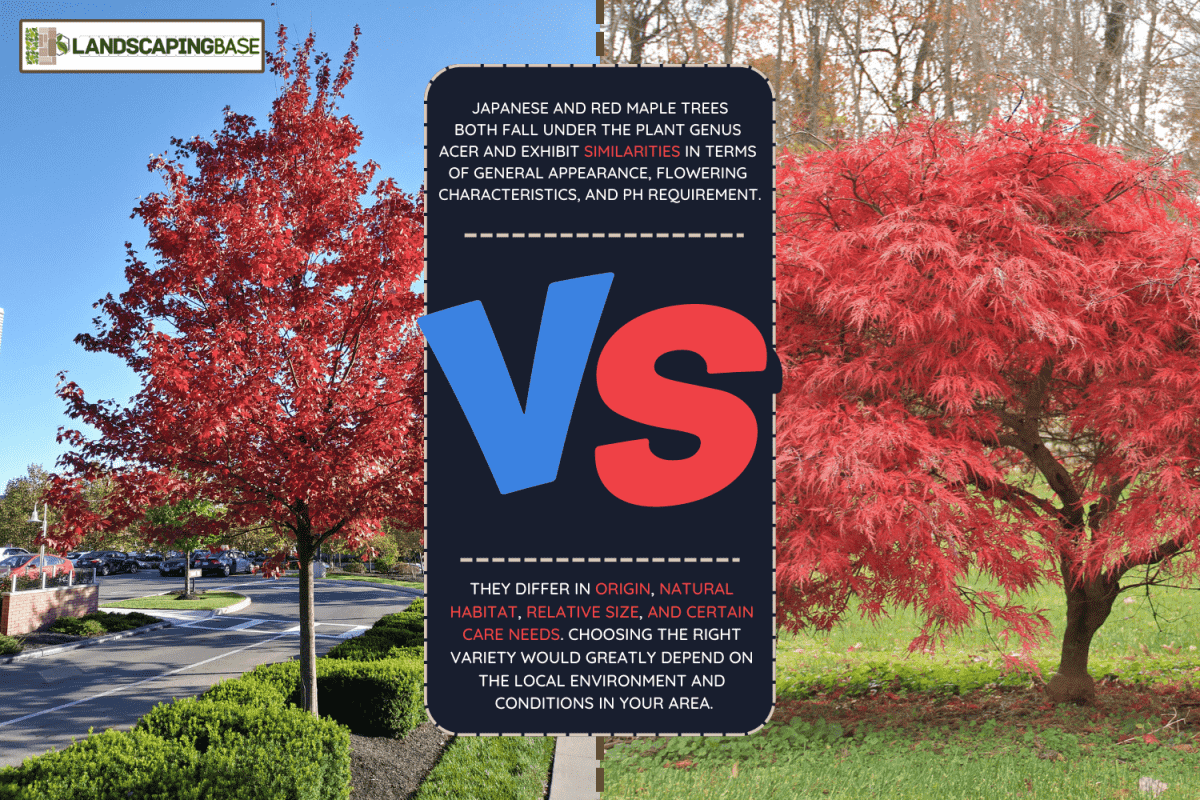
Maple Trees: An Overview
Maples (Acer) are a variety of trees and shrubs that feature distinct palmate leaves and offer a great variety of sizes, forms, and foliage that display attractive colors. Although most cultivars are native to Asia, different species are found in several locations across the globe, namely: northern Africa, North America, and Europe.
The trees are known for their various ecological, commercial, and aesthetic uses. Most plant enthusiasts and gardeners alike plant maples for aesthetic and ornamental purposes. They can even be grown as a bonsai specimen.
Naturally, they serve as food and home for several animals and insects. The nectar and pollen attract bees, making pollination and the natural cycle possible.
Commercially, maple itself is a source of lumber. Companies use them as wood flooring, furniture, and any other products related to timber. Apart from this, the tree's sap is manufactured as maple syrup.
Which To Choose?
Several factors have to be considered before finalizing your choice. First, which tree is more suitable in terms of the general conditions in your area. Red maples are the more resilient variety and can thrive in most environments whereas the Japanese species have specific growth requirements.
The amount of sunlight, soil components, and general climate influence the health of both species, and red maples can withstand temperature extremes. But if your choice leans toward Japanese maples, it is possible to grow them in pots or containers.
The dimensions of your garden also come into play, if you have a big enough yard and prefer a low-maintenance and rapid-growing tree, a red maple is a better choice. A small secluded garden would host a Japanese maple perfectly and would be optimal for its growth.
Finally, before choosing which variety is best for you, consider the tree's general characteristics as opposed to your region's environment and overall conditions.
Japanese Maple
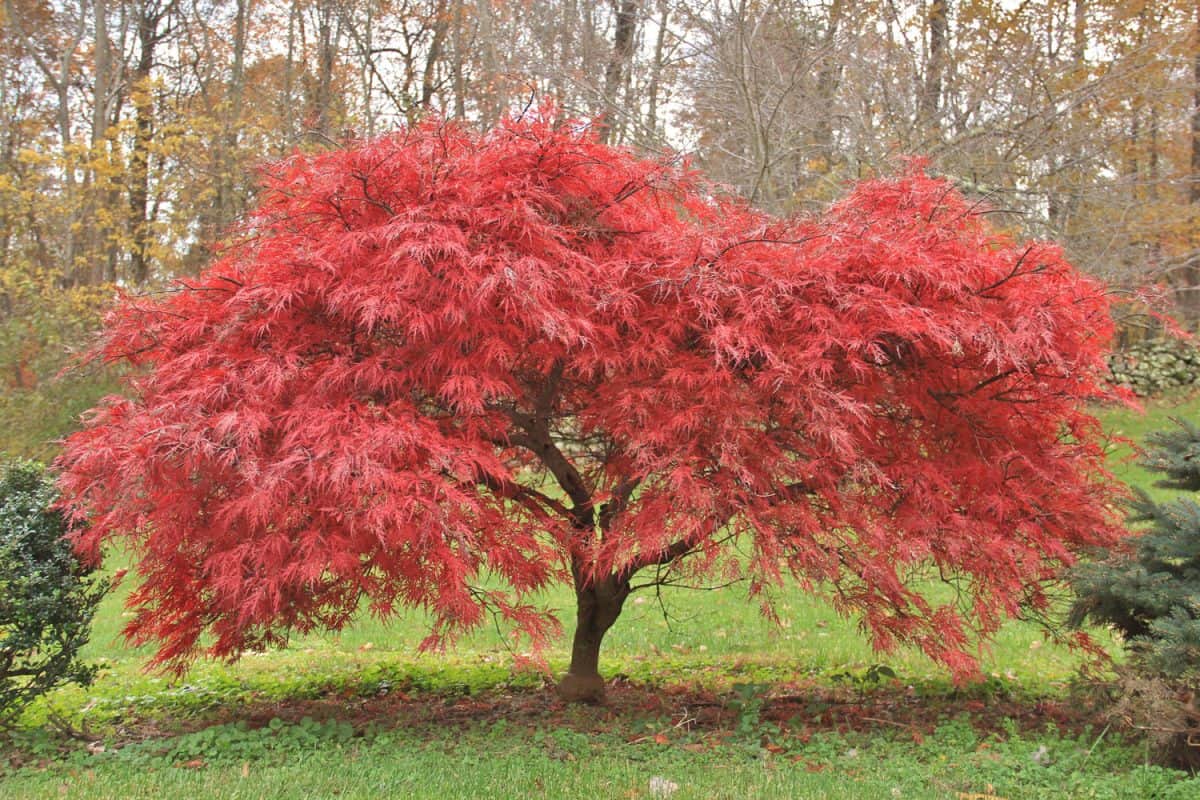
Japanese maple (Acer palmatum) originated from Asian countries like Japan, China, Korea, and in some regions of Russia.
It is one of the smaller varieties of maple that may grow directly upright or in cascading fashion. The former is a slow-growing species that has a mature height of about 25 feet. On average, most do not even develop past 15 feet. The latter usually remain below 10 feet tall and may be cultivated as a shrub for hedging.
The foliage typically changes color with the seasons and features shades ranging from white, pink, red, purple, orange, maroon, and bright green. They bloom in the spring and produce small red or purple flowers that develop into fruits over time.
Japanese maples thrive best in partial shade or exposure to morning sun and do well in filtered or dappled light. When placed in open areas, the leaves suffer from sunburn and the damage ultimately affects their development. The branches are relatively weak and fragile and may snap or break under heavy snow and windy conditions.
The particular maple variety grows well in moderately moist, loamy, well-draining soil with slightly acidic pH. It requires regular watering and cannot be left in dry soil for prolonged periods.
Organic compost and mulch may be applied to regulate the ground conditions and provide necessary nutrients. They are inherently slow-growing trees that respond best to all-purpose, slow-release fertilizers.
Because of their size and growth rate, Japanese maples are ideal for small gardens and landscapes either as shade trees, focal points, or hedges. Plant them in select areas with partial shade and away from the elements.
Advantages Of Japanese Maple
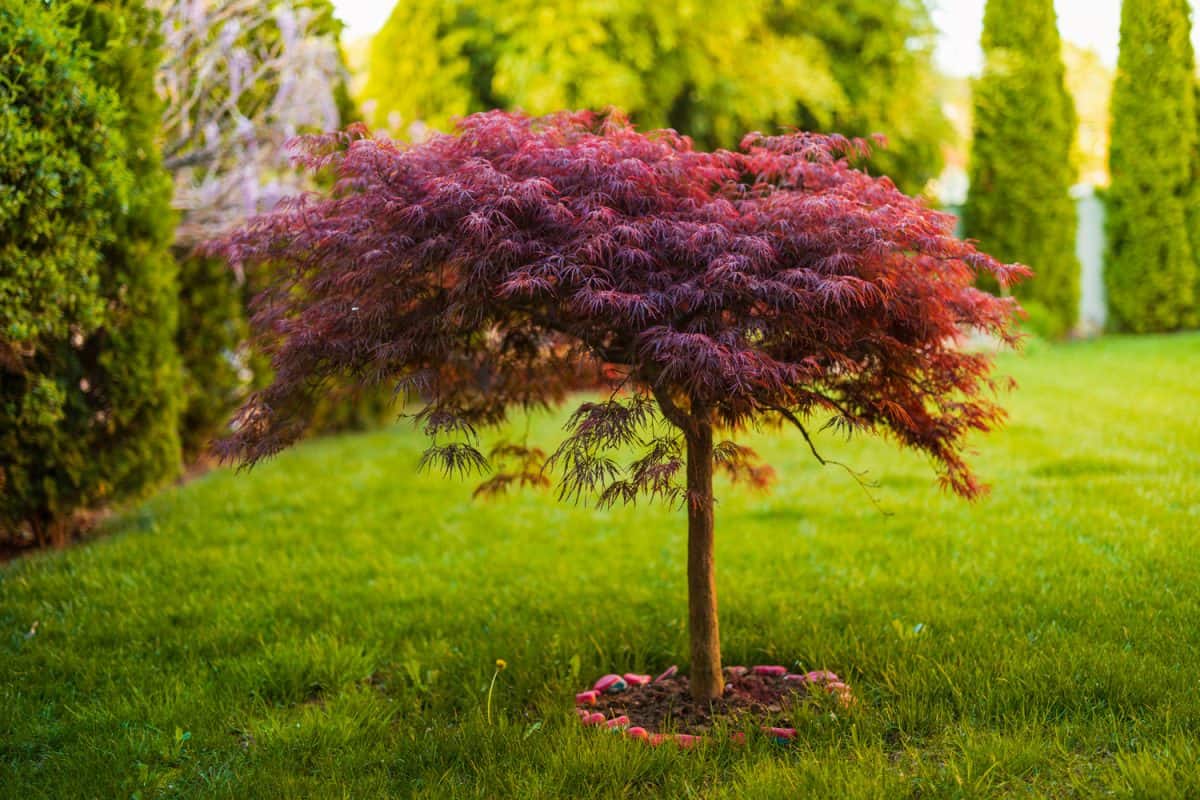
Japanese maple comes in a wide variety of species to choose from, all of which feature magnificent foliage color in the spring. Since they are relatively small, they are ideal for gardens with limited space and landscaped nooks or corners.
Their limited size and slow-growing nature do not tend to dominate gardens like other species of maple but still stand out when used as an accent or highlight.
They do not require regular pruning and only dead or damaged branches have to be removed.
Disadvantages
Japanese maple is regional and can only thrive in certain areas; trees planted in less than ideal conditions may exhibit poor growth and susceptibility to disease.
Most varieties do not tolerate full sunlight and may have to be cultivated with other trees that would provide a canopy.
Coupled with this, they have characteristically narrow fragile branches that may break or snap in windy environments. The resulting injuries from broken portions of the tree put them at greater risk to pests and diseases.
Red Maple
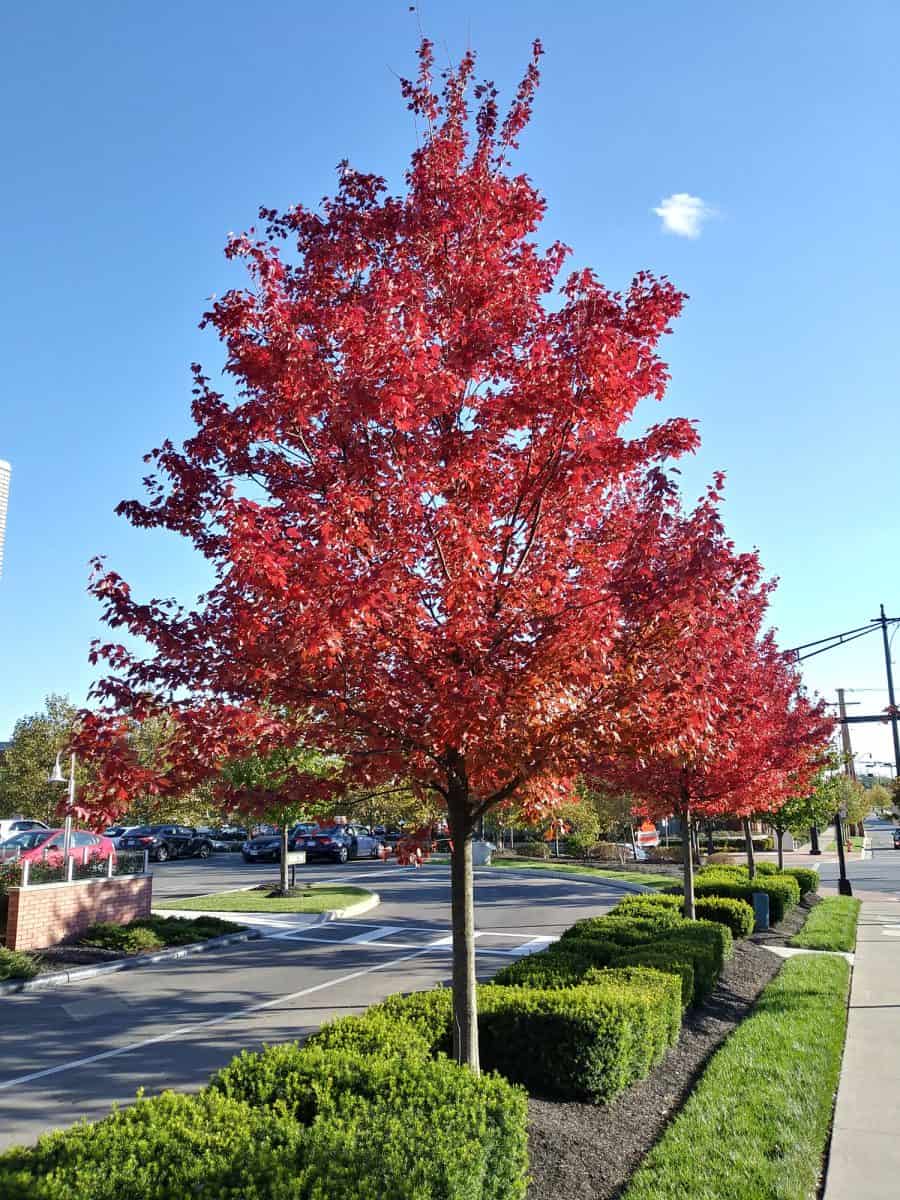
Red maple (Acer rubrum) is native to eastern American forests and is considerably more adaptable and resilient than the Japanese variety.
They grow at a moderate rate and at full maturity can reach heights between 40 to 60 feet with a diameter close to 50 feet. Typical of maple trees, the foliage exhibits changes in color that include red, maroon, scarlet, deep orange, and less commonly, yellow.
Blooms appear on their bare branches in late winter or early spring and the tiny red flowers are the reason the species is so-called.
Red maple can tolerate and adapt to different environments and growing conditions. It can withstand partial shade and thrive with full sunlight without exhibiting signs of poor development or deterioration.
They can be grown in hot and dry climates as well as colder regions and generally remain unaffected and healthy.
The tree adapts to different soil textures, compositions and does not generally require applications and amendments. It thrives best in loamy, moist, slightly acidic environments and most species feature drought tolerance.
Fertilizers are not usually necessary as long as a layer of mulch is applied to retain moisture. Composts are adequate enough to provide the necessary organic nutrients for the tree's development.
Advantages Of Red Maple
Red maples are ideal for large gardens and provide a focal point as a shade tree. If you prefer to have a fast-growing plant, then this variety is the ideal choice for you - it grows up to 5 feet tall (1.5 meters) per year.
It has an attractive foliage that features a greenish hue that dramatically changes into vibrant red and orange in the fall. Scarlet buds appear in the spring and open up into a display of red flowers.
Apart from this, red maple is relatively easy to grow and can thrive in various living conditions (zones 3 to 9). Since the tree can thrive in both wet and dry environments, it can be planted next to a creek, pond, or in drier areas.
The potential size and location must be considered to optimize its ornamental as well as functional purpose.
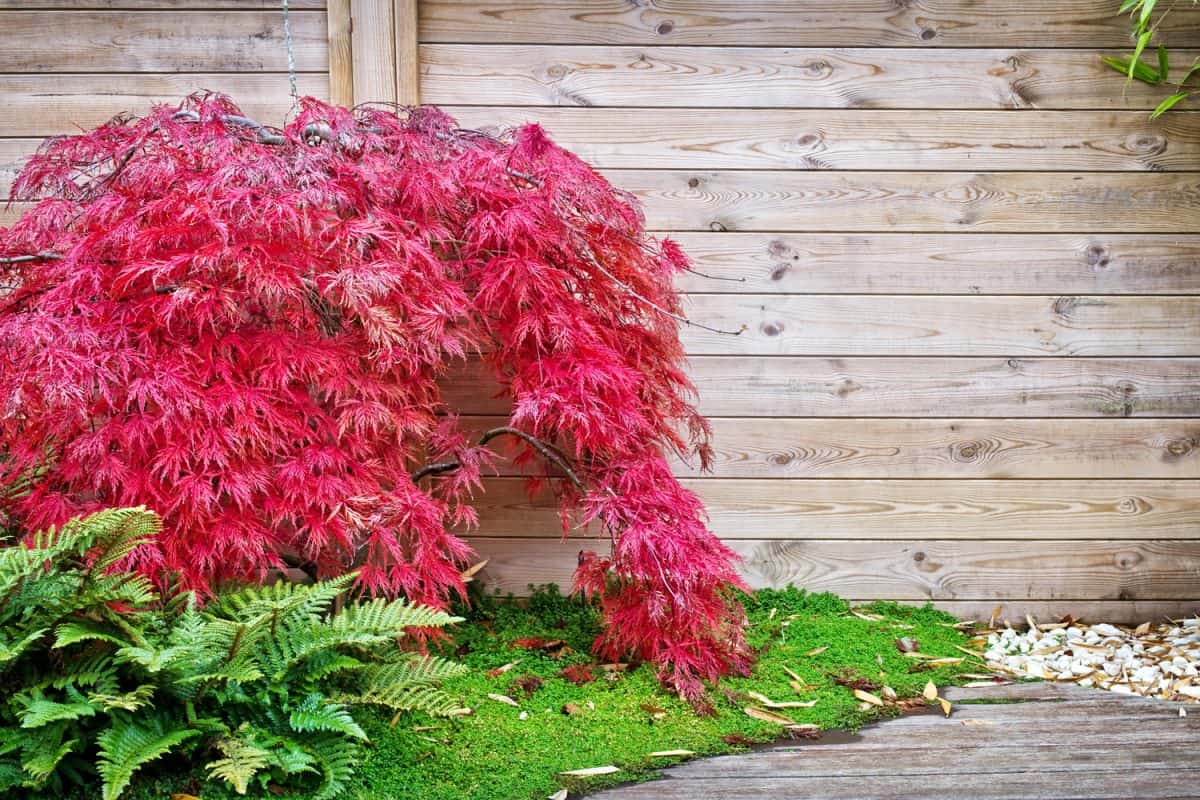
Disadvantages
Red maple has shallow roots that can eventually crack and damage pavements and sidewalks. Since it is a rapid-growing tree, it is considered an invasive species if not properly maintained with regular pruning.
It has a relatively weak branch that will easily break due to strong winds and ice storms.
Since the branches or limbs are susceptible to breaking, the wounds become an entryway for pests and diseases namely: aphids, scales, beetle borers, verticillium wilt, and root rot.
What Is The Hardiest Maple Tree?
Norway maple is considered as the hardiest maple tree because it is tolerant to extreme weather conditions. It grows well in US hardiness zones 3 to 7 and it generally prefers moist but well-draining soils.
In Closing
Both varieties feature beautiful foliage and blossoms that enhance most outdoor settings. A Japanese maple is more versatile and may be fitted into any yard or landscape but is relatively more fragile and high maintenance. A red maple is resilient and adaptive but requires a bigger area to flourish that may dominate an entire garden. We hope the post helped you decide which tree is best suited for you.
You may also find these topics interesting:

![man replanting herb with yellow flowers for use in landscaping. 15 Perennials That Absorb Water [Incredible Choices For Foundation Landscaping]](https://landscapingbase.com/wp-content/uploads/2022/09/man-replanting-herb-with-yellow-flowers.-15-Perennials-That-Absorb-Water-600x400.png)
![Big custom made luxury house with nicely trimmed and landscaped front yard, South Facing Front Yard Landscaping Ideas [17 Ideas To Increase Your Curb Appeal]](https://landscapingbase.com/wp-content/uploads/2022/09/BIGCUS1-600x400.jpg)
